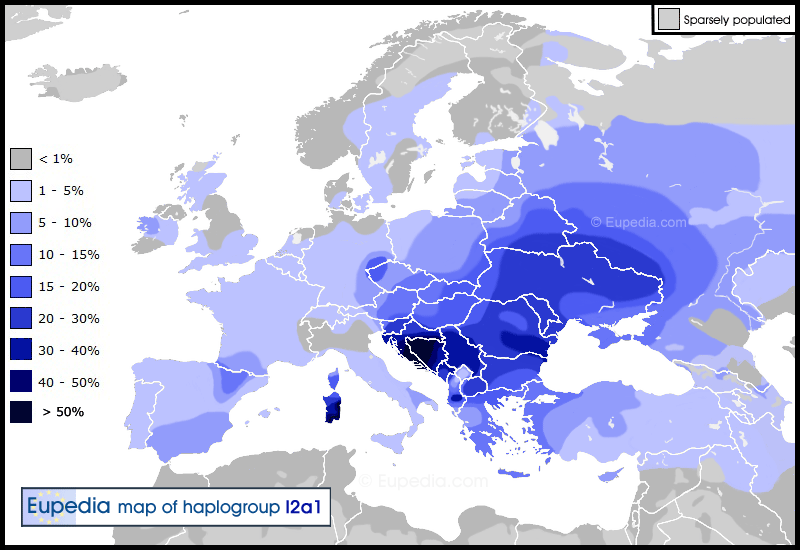However, there are some problems with your basic assumptions about both Sarmatians and Slavs, and their connection to the Balkanic populations.
First problem: you seem to think that the Sarmatians must have had a kind of modal Y haplotype, as it is the case for the R1a in the present day Slavic populations.
Second problem: you seem to imply that the fact that the majority of the present day Balkanic populations do consider themselves as being of the Slavic ancestry must be confirmed somehow on the genetic level.
Thanks for the nice words.
I admit I had mistakes at the beginning. It was common to think Slavs were predominantly R1a so I tried to make story which would explain arrival of Croats and Serbs. One of mistakes for example was relating Serbian and Croatian migrations to the Hunnic period, and now I believe Avars played much bigger role in Slavic migrations as a whole, but especially for Croats and Serbs.
But the "Second problem" as you described it, is the premise I'm still holding to. As fellow forum member iapodos explained there is no reason to assume I2a2a-Dinaric was in the Balkans prior to Slavic migrations. You have a nice subtitle for your post "Dig deeper". The deepest clue I had, before I had known much about haplogroups is that majority of the people in Western Balkans did arrive in the Early middle ages. Maybe we do not know this or that, maybe I'm an amateur in some of these fields, but on the other side living in the Balkans, great interest in history of the neighboring people, visiting different parts of the region made people like iapodos and me believe that connection between I2a2a-Dinaric and the Slavic arrival is inevitable. Some researchers from the West are beginning to accept this, and I also have to say the whole thing is not my idea.
To all the arguments already written I will add the language issue.
Croatian and Serbian languages are clearly Slavic, and their roots do not come from the areas with significant R1a frequencies, but from Dalmatia and Herzegovina, exactly those areas with the highest I2a2a-Dinaric. This match between language and Y-DNA is very clear and to use the words of "how yes no" it can't be a coincidence.

Where are Sarmatians in all this. Well since I understood that history of I2a2a-Dinaric is less related to them I did neglect them a bit. I agree with your assumption of Sarmatian tribal confederations with people of different origin. The main question is how many of them did move from Russian plains towards west? In both of scenarios, the one with high number of Sarmatians entering Europe and the other scenario with not that significant Sarmatian migration, R1a seem to be important part of their Y-DNA. I'm not saying that modal R1a haplotype defines them, but for me it would not be strange that Sarmatians were predominantly R1a.
When talking about R1a, Klyosov did some interesting work:
http://r1a.org/3.htm
He is not much appreciated by some people for his stories about R1b, but when it comes to making some structure inside R1a haplogroup I see no one else close to his results.



